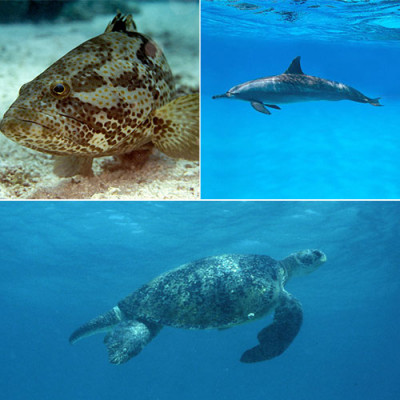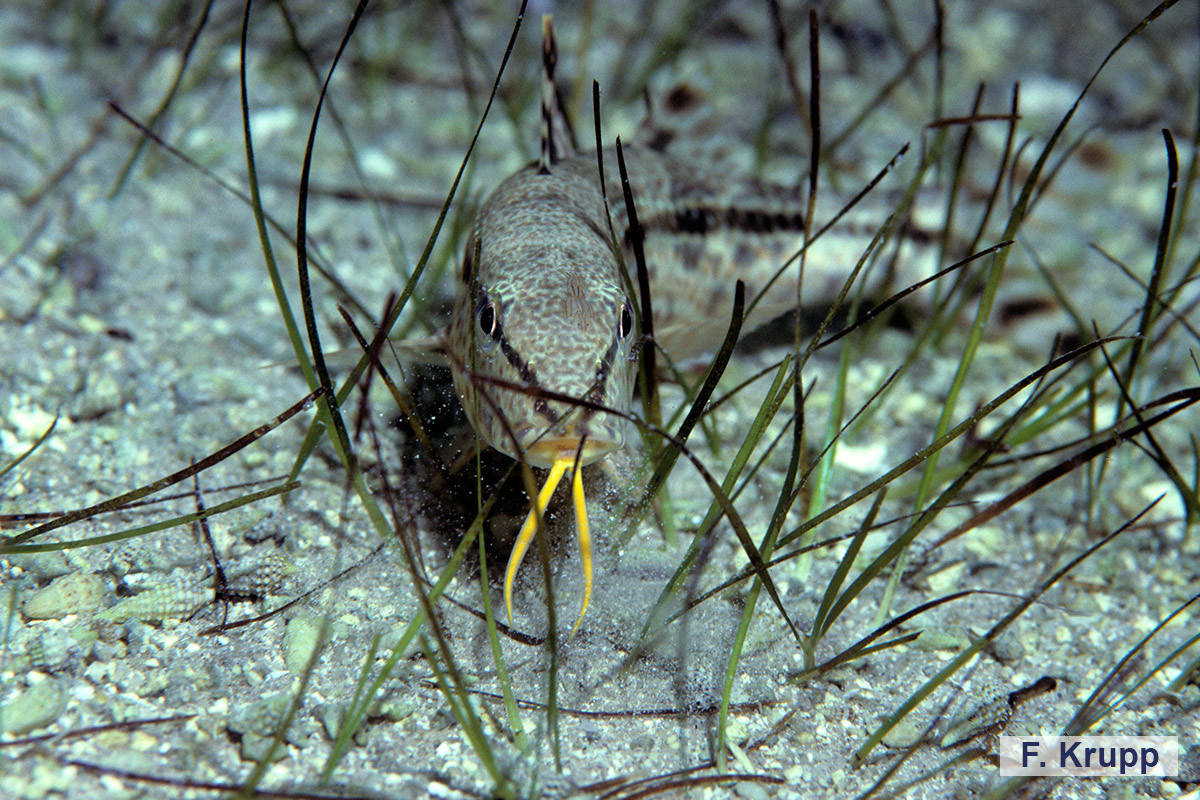Name: Pearly Goatfish
Local name: Hamer, Sultanibrahim
Scientific name: Upeneus oligospilus
Classification: Class: ray-finned fishes; Order: perch-likes; Family: goatfishes (Mullidae)
Synonym: Formerly known from the Arabian Gulf as Upeneus tragula
Size: It commonly attains 23 cm, with a maximum length of 30 cm.
Habitat:
The Pearly Goatfish is a shallow-water species, occurring in protected waters of bays and lagoons, on sandy substrates, in seagrass beds, and near coral areas. They feed on benthic invertebrates, particularly worms and crustaceans using their barbels, which possess chemosensory organs, in search of prey.
Distribution:
Currently, this species is only known from the Arabian Gulf.
Conservation status:
In the IUCN Red List of Threatened Species, the Pearly Goatfish is classified as Least Concern (LC). It is caught by seines and marketed fresh.
Description:
The body is moderately elongate and somewhat compressed, with a long snout, a relatively small and slightly ventral mouth, and a pair of long barbels on the chin. Goatfishes have two widely spaced dorsal fins. Head and body coloration is brownish to greenish grey dorsally, densely flecked with reddish brown, shading to white ventrally with numerous small reddish brown spots. A dark reddish brown to black mid-lateral body stripe extends from the tip of the snout to the caudal-fin base. All fins have dark reddish brown or black stripes, bars or blotches, and barbels are yellow or pale brown.








